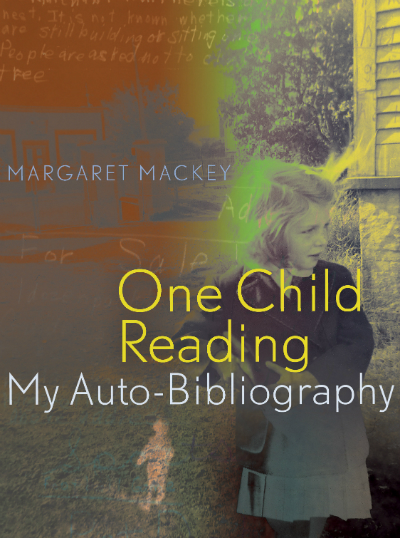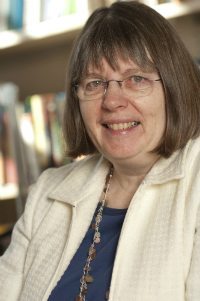When I begin explaining my book One Child Reading to people, everybody asks the same question: “How do you remember all those things you read as a child?” It’s a reasonable point to raise. In collecting as many as possible of the books and other materials I encountered as a girl, I have acquired eleven 30-inch shelves of texts from my childhood: picturebooks, series books, and stand-alone novels; school textbooks; magazines for children and adults; cookbooks; knitting patterns; sheet music; Sunday-school leaflets; DVDs of television programs and movies; audio recordings of vinyl records and radio programs; scrapbooks, diaries, and an assortment of family documents. I haven’t counted individual items, but the number ranges well into the hundreds. And that takes no account of dozens more titles in libraries, archives, and museums across Canada.
Why have I made this massive effort? In 2008, after decades of working with readers other than myself, trying to gain a greater understanding of the mysteries of our interpretive minds, I decided to look at how we read from a different angle: from the inside out, drawing on my own life as a learning reader over a period of twelve years. To ground my project beyond a mere assemblage of memories, I would re-collect the materials that had informed my developing literacy in St. John’s, Newfoundland, in the 1950s and early 1960s and read them all again, with an eye informed by theoretical awareness of literate processes.
To collect my set of materials, of course I didn’t sit down on day one of my research project and produce a list of hundreds of items. I started with what was on the family shelves. The magnificent collection of old children’s books in the University of Alberta Library supplied reminders and examples of books I had not considered for half a century and more. And, just as happened the first time around, one title led to another in a variety of specific and nebulous ways; over several years, my memory was jogged into retrieving past titles and experiences.
Children’s books of the 1950s and 1960s are readily available (and cheap) from online second-hand bookstores. For a higher price, you can buy old copies of the children’s magazine Jack and Jill, and the adult Ladies’ Home Journal. A request in the weekly church bulletin brought a treasure trove of scanned Sunday-school leaflets from a family who had saved them all. I even located my first-ever knitting pattern (a doll’s dress) on Google and ordered the instruction booklet from Australia, via eBay.
School textbooks offered a greater challenge. Textbook titles are generic – not retrievable by memory and not searchable by content words. But Memorial University of Newfoundland has a wonderful archive of school textbooks, and, with expert help from librarian Alison Mews, I was able to locate the books used in my own school.
What did I achieve by revisiting my childhood reading in such breadth and depth? I discovered how much local place and time affect a young, developing reader, who can only bring to her books the home-grown understanding she has gleaned from her own surroundings. I gained a greater respect for the cognitive complexities of what we do when we read. I also learned that when I present my findings, stressing the particularities of my own experience, listeners silently substitute their own specific examples for the ones I offer (I know they do this, both from the introspective expressions on their faces at the time and because afterwards they explicitly say they have done so).
People become readers one book at a time. In discussion of particular and individual examples of specific reading experiences, we may approach a more general understanding of one of the miracles of the human mind.
Margaret Mackey is Professor in the School of Library and Information Studies at the University of Alberta. She has published widely on the subject of young people's reading and their multimedia and digital literacies. A voracious reader, she lives in Edmonton.
Bookmark It!
As the voice of the humanities and social sciences in Canada, the Federation is a great supporter of books. Our Awards to Scholarly Publications Program (ASPP) has supported the publication of important Canadian scholarly books since 1941. Bookmark it! shares the story behind some of these fascinating books. Occasionally, we’ll also highlight other books that are significant to Canadian culture, society and research. Read more posts.
Livres à vous!
En tant que porte-parole des sciences humaines au Canada, la Fédération est une fervente défenseuse des livres. Notre Prix d’auteurs pour l’édition savante (PAES) soutient la publication d’importants livres savants canadiens depuis 1941. Livres à vous! dévoile les coulisses de ces livres fascinants. De temps en temps nous mettrons en avant d’autres livres qui jouent un rôle important pour la culture, la société et la recherche canadiennes. Lire d’autres billets.


